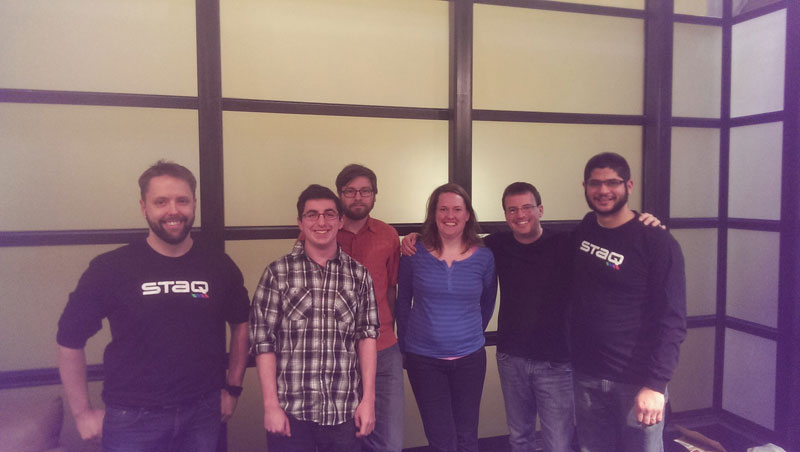Last September adtech startup Staq put out a call to all would-be developers: come to Baltimore to learn Ruby programming and we’ll pay you $20 an hour.
After five months, the results are in.
- Five “apprentices” were selected from an applicant pool of more than 100.
- All five eventually worked as full-time software developers with Staq, and all five were offered full-time jobs with the startup at the end of their residency.
- Four accepted, while the fifth moved to New York City and “got a great job offer with a well-known, successful software company,” wrote Staq cofounder Mike Subelsky in a blog post. (One of those who accepted: Kate Bladow, organizer of the Tech & Social Change Meetup in Baltimore city.)
- The age range of the trainees was from 20 to 30, Subelsky said in a follow-up e-mail.
From the pool of applicants cofounders Subelsky and James Curran chose 12 people for a series of preliminary training sessions at the startup’s office on The Avenue in Hampden. From that group of 12 came the five ultimately selected.
“I was very surprised at the number of people who had a strong computer science and engineering backgrounds, who saw this a chance to jumpstart their careers or re-engage with programming after a period of time doing something else,” said Subelsky in his blog post.

While relative novices were among the applicant pool, this Staq Ruby apprenticeship wasn’t a job for ignorant programmers. As Subelsky outlined in a blog post in September advertising the position, applicants needed to have “basic knowledge of programming and working at the command line,” among other skills. As Subelsky recounts, the tasks required of the potential apprentices at the in-person training sessions were a touch ambitious:
We conducted four sessions of two hours each where we dived right in and showed the students the guts of how Staq’s data extraction technology works, along with the basics of Ruby and rspec. In retrospect, our syllabus was far too ambitious; the next time we do this we will just focus on using Ruby to write web-and-API scrapers using mechanize and typhoeus, along with a gentle introduction to CasperJS. I should have introduced Staq’s proprietary framework later in the process.
In other words, Subelsky thinks the trainees should have been given a firmer foundation in Ruby programming prior to being shown what, specifically, Staq does.
Most of the education for the five apprentices chosen after the initial training was “hands-on,” Subelsky said, although all the developers in the startup began attending weekly sessions held for the trainees. All five began as part-time developers and moved on to full-time trainee roles prior to being offered full-time jobs in January.

The five additions bring Staq’s full-time employee count to 12, Subelsky said in an e-mail. Eight developers work in Staq’s Hampden office, while four people on the business side of the company, including Curran, reside in New York City.
Subelsky wrote that Staq will conduct a similar apprenticeship program in the future, but must first “grow the business some more.”
As for what Subelsky would do differently? He writes: “I regret not having more resources and time to devote to the training, since we’re still a small company at this point. The next time we do this, I want to involve a professional Ruby trainer who could give more structure and rigor to the program.”







